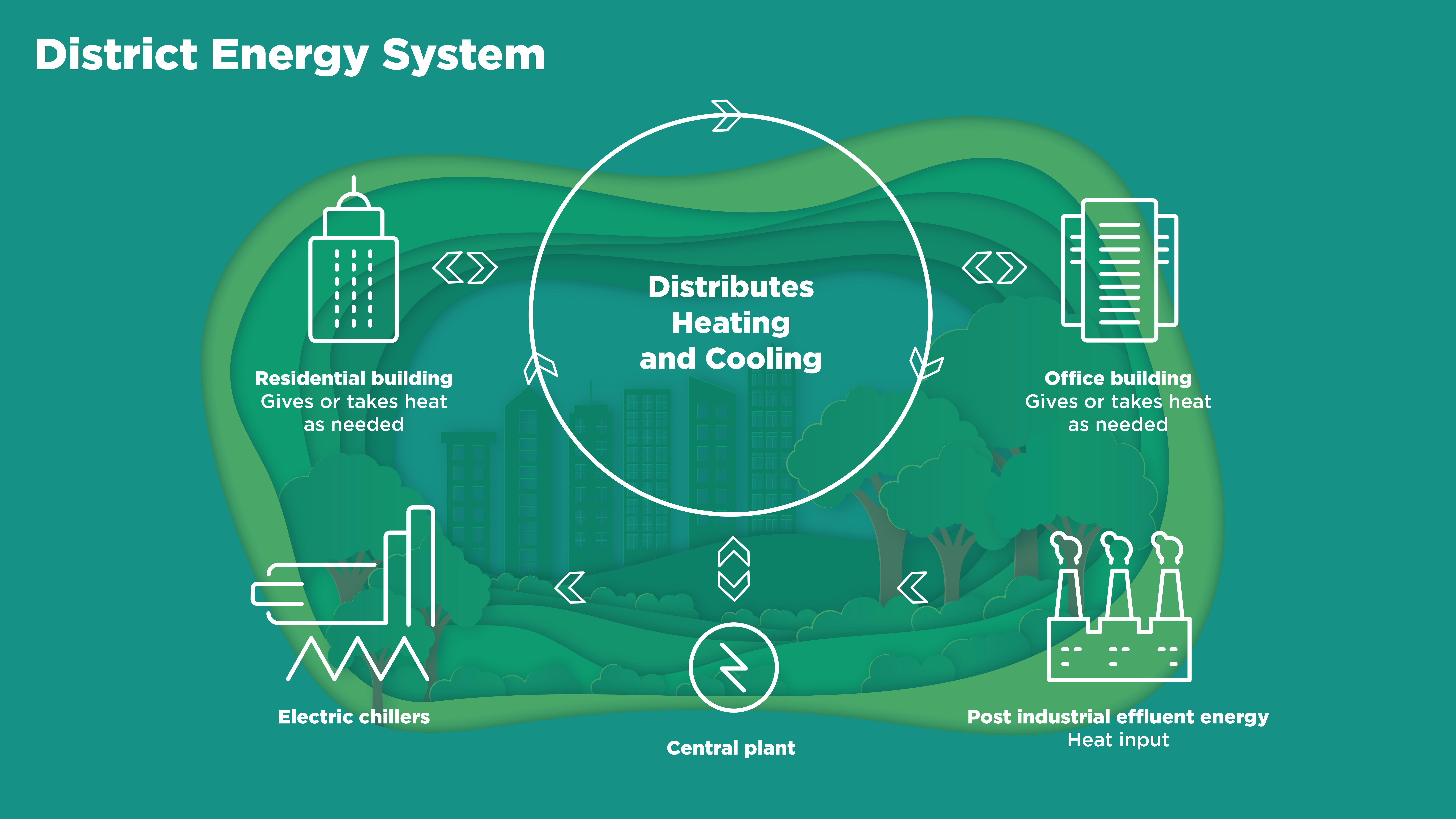If reading about electricity has ever left you feeling short-circuited by its technical jargon, you're not alone. At Hydro Ottawa, we know that understanding how energy works can seem daunting, but it doesn’t have to be.
Let's dive into some common terms and break down what they mean so you can feel confident and informed about the energy that powers our community.
Battery storage: Refers to systems and technologies that capture and store electrical energy for later use when production is low or demand is high. These systems can help balance energy supply and demand by storing excess power, often generated from renewable sources like hydro or solar, and releasing it when needed. Electric vehicles (EVs) offer a promising example of battery storage for the future: their high-capacity lithium-ion batteries not only power the vehicles but, with emerging vehicle-to-grid (V2G) technology, can supply energy back to the grid during outages, enhancing overall resilience.
Capacity: Refers to the maximum amount of electricity that a grid or power plant, such as a hydroelectric facility, can produce or handle at any given moment. Measured in megawatts (MW), it indicates the system’s peak output. For example, the hydroelectric facilities at Chaudière Falls on both sides of the Ottawa River produce a combined capacity of 84.6 MW.
Decarbonization: Refers to the process of reducing carbon emissions when we produce or use energy. In practice, this involves shifting away from fossil fuel options, like gas furnaces and gas powerd cars, towards cleaner alternatives from renewable energy sources like heat pumps and electric vehicles, as well as improving efficiency and implementing technologies that capture or offset carbon emissions.
Demand response: Refers to programs and strategies that encourage electricity consumers to adjust their usage during periods where electricity demand is high. By incentivizing reduced or shifted energy consumption, such as by adjusting EV charging schedules or thermostat settings, these programs help balance supply and demand while enhancing grid stability.
Distributed energy resources (DERs): Refers to decentralized electricity-producing or storage systems, such as solar panels and battery storage, that connect to the main power grid. By generating or storing energy close to where it’s consumed, DERs reduce reliance on centralized power plants, diversify our energy mix, and enhance overall grid efficiency, resilience, and sustainability.
District energy system (DES): Refers to a centralized network that delivers heating and cooling to multiple buildings and communities via underground hot and cold water pipes. By optimizing the heating and cooling load requirements for the entire network, DES captures and redistributes excess thermal energy, often converting waste heat from industrial or commercial operations into useful energy where it’s needed. This approach eliminates the need for individual boilers, chillers, or cooling towers, reducing building footprints, energy consumption, and environmental impact. In essence, DES provides an efficient, resilient, and sustainable solution for urban thermal energy management. In Ottawa, examples include the Zibi Community Utility District, which leverages waste heat from the Kruger paper mill, and the upcoming central utility plant at The Ottawa Hospital’s new campus, designed to ensure that critical patient care systems remain operational during power disruptions.

Electrification: Refers to the process of transitioning systems, such as transportation, heating, and industrial processes, from fossil fuel-based energy sources to those powered by electricity. This shift aims to reduce greenhouse gas emissions, but its success depends on generating that electricity from clean, low-carbon sources.
Energy efficiency: Refers to using less energy to perform the same task or deliver the same level of service. For example, upgrading from traditional incandescent bulbs to LED lighting can achieve the same brightness while consuming significantly less power. This concept extends to optimizing technology, building design, and operational practices to reduce energy waste, lower costs, and minimize environmental impact.
kWh consumption: Refers to the total amount of electrical energy used, measured in kilowatt-hours. One kilowatt equals 1,000 watts, so operating a 1,000-watt device for one hour uses one kWh. For example, a 100-watt light bulb running for 10 hours consumes one kWh. This measurement, shown on your electricity bill, indicates the energy used over a billing period.
Load: Refers to the amount of electricity being used at any given moment. It represents the current demand on the electrical grid and can vary throughout the day based on consumer activities. In Ottawa, high load demand is typically observed during the cold winter months when heating is essential, and during the heat of summer, when air conditioning usage peaks. Load is managed at the provincial level by the Independent Electricity System Operator (visit their website to see real-time demand and supply data) and locally by Hydro Ottawa, ensuring a balanced and reliable power supply.
Low-carbon: Refers to energy sources or technologies that produce significantly fewer greenhouse gas emissions compared to traditional fossil fuels. Low-carbon strategies include harnessing renewable resources like hydro , solar, and wind, as well as employing advanced technologies such as carbon capture and storage to reduce net emissions. These approaches are integral to reducing the overall carbon intensity of our energy systems and mitigating climate change.
MW (megawatt): Refers to a unit of power that measures the rate at which energy is produced or consumed. In simple terms, it tells you how fast energy is being used or generated. For example, if a power plant has a capacity of 100 MW, it can produce energy at a rate of 100 megawatts at any given moment. This measurement applies to all kinds of energy systems, from large power plants and battery storage to individual equipment.
MWh (megawatt-hour): Refers to a unit of energy that measures the total amount of electricity used or produced over a period of time. For instance, if a device runs at a rate of one megawatt for one hour, it consumes one MWh of energy. This measurement is used to quantify energy usage in any system that relies on electricity.
Micro grids: Refers to a localized energy system that can operate independently or alongside the main grid, and can reduce demand during peak periods. It integrates energy users with local power generation, such as solar panels, with energy storage, like batteries, to ensure reliable electricity. For example, a residential community using rooftop solar and battery storage to power homes during a blackout is operating as a microgrid.
Net zero: Refers to balancing the amount of greenhouse gases emitted into the atmosphere with an equivalent or greater amount removed or offset. In other words, to achieve net zero, you must remove as much (or more) greenhouse gas emissions from the environment then are put into it. This can be achieved by reducing emissions to as close to zero as possible and compensating for any remaining emissions through measures like reforestation, soil carbon sequestration, or carbon capture and storage, ensuring that overall our economy does not contribute to climate change.
Net metering: Refers to a billing arrangement between electricity providers, like Hydro Ottawa, and their customers. The program allows customers to reduce their monthly electricity cost by generating their own electricity from a renewable energy source, such as solar panels, instead of using their providers supply. Net-metering programs also allow customers to send surplus energy back to the grid for a non-cash credits, in kilowatt-hours, that offset your future electricity costs.
Renewable energy: Refers to energy derived from natural processes that are replenished at a rate that is equal to or faster than the rate at which they are consumed. Common sources include hydro, solar, thermal and wind, which harness natural phenomena like flowing water, sunlight, and air currents to generate electricity. Unlike fossil fuels, renewable energy sources emit little to no greenhouse gases, reducing environmental impact and supporting a cleaner energy future.
Smart grids: Refers to advanced electricity networks that use real-time data, automation and smart technology to improve energy efficiency and reliability. They quickly detect and fix issues to reduce outages, support peak demand management, and facilitate a shift from centralized to decentralized energy models, all connected by high-speed fibre networks for rapid response.
Zero-emissions: Refers to energy sources or technologies that do not produce harmful emissions during operation. Unlike net-zero strategies that balance out emissions, zero-emission options generate clean energy from the start and play a critical role in efforts to combat climate change.
Now that you know the fundamental ABC’s of energy, you’re better equipped to understand how electricity powers our lives and is driving innovation for a sustainable future.
